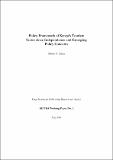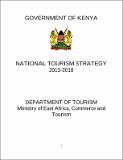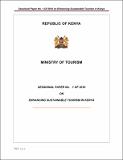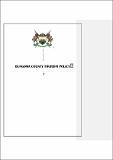| dc.description.abstract | Tourism is an important sector in Kenya, being the third largest foreign exchange earner after horticulture and tea. The sector is also a major employer with substantial direct, indirect, and induced employment effects. After growing rapidly, particularly in the 1960s and 1980s, tourism performance became erratic in the 1990s, with the first slowdown occurring around 1991–1992. The sector recovered quickly and reached its peak in 1994. The second decline began in 1995 and continued until 1998. The sector recovered in 1999, but it is doubtful that this trend is sustainable considering the electricity and water shortages facing the country and the crippling indebtedness of many tourist hotels.
Several factors are responsible for the downward trend now characterizing the tourism sector. These include insecurity and instability, negative publicity, crumbling infrastructure, inadequate marketing and image-shaping efforts in an increasingly competitive environment, environmental degradation of key tourism resources, declining wildlife populations, poor service, the ‘beach boy’ problem, and poor implementation of often appropriate or laudable policies. Generally, inadequate implementation of policies and weak policy conception and formulation are key variables in the performance of Kenya’s tourism industry. This paper is a critical review of Kenya’s tourism policy since the 1960's... | en |




